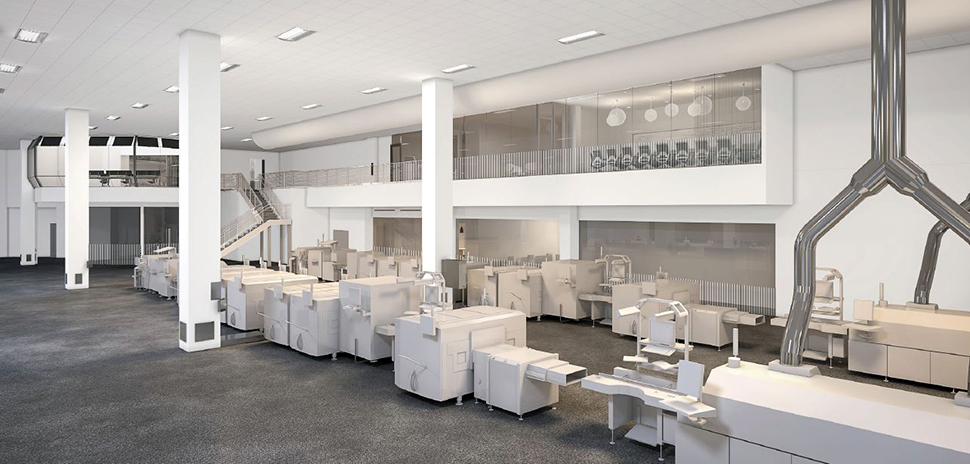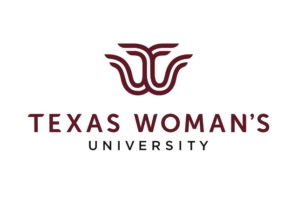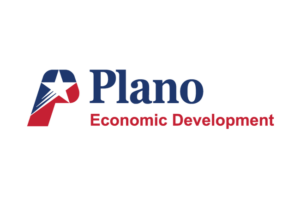As the telecommunications industry’s latest iteration—so-called 5G wireless service—rolls out across the country, North Texas is very much at the forefront of many companies’ efforts.
The term 5G refers to “fifth generation” wireless, the latest and fastest version of the radio network technology underlying today’s cell service.
Thanks to a history in technology that dates back the founding of Texas Instruments in 1956 and Collins Radio in 1957, both in Richardson, the Dallas-Fort Worth region long has hosted some of the biggest names in telecom. That means that as investment spending rises, area players increasingly play leading roles in how the future of wireless unfolds.
Investment by the four biggest wireless service providers—AT&T, Verizon, T-Mobile and Sprint—totaled $55.7 billion last year, according to Standard & Poor’s Global Market Intelligence. That was up from $53.7 billion in 2017 and just under $50 billion in 2013.
Telecoms spending heavily on 5G technology
“While the number of 5G markets remains relatively limited at this point, all of the operators say recently that they are making the necessary investments both to deliver faster 4G LTE speeds in the near-term and to pave the way for widespread 5G deployment in the coming years,” S&P analyst Sarah Barry James wrote in a February research report.
Jon Freier, T-Mobile’s executive vice president of consumer markets, says the nation’s No. 3 wireless provider will spend about $30 billion in the next five years on 5G. And when T-Mobile’s pending merger with No. 4 Sprint closes, expected later this year, it will add another $10 billion in the next three years, he says. A good bit of that will be spent in North Texas.
T-Mobile employs 2,365 people locally in its numerous stores and at its Frisco regional office. It’s the company’s second-biggest concentration of workers in the country, behind only its Bellevue, Wash., headquarters. That includes about 1,000 people in T-Mobile’s national engineering and information technology center in Frisco, a number that is growing, Freier says.
“Texas will be above-trend” on 5G spending, says Freier, a Fort Worth native and longtime West Texas resident now based in Bellevue. “You’ve got two of the top five markets in DFW and Houston. And with the population and job growth, this is ground zero for investment.”
All of the big wireless providers have sizable employment locally. Dallas-based AT&T has about 15,000 employees in North Texas and has begun 5G coverage here and in other large markets. Verizon, which last year moved about 3,000 employees into its huge new Hidden Ridge development in Irving, first launched 5G in Chicago and Minneapolis this spring.
In May, Sprint held its nationwide 5G launch party in Irving. The event marked the launch of 5G service in Irving, downtown Fort Worth, and parts of north Dallas.

Richardson’s Telecom Corridor is a thriving area of enterprise and entrepreneurship.
Telecom has more than just wireless providers in its sector
The wireless service providers are the most visible players in telecom, but plenty of others are just below the surface. Like Richardson-based Fujitsu Network Communications, which provides fiber optics switching equipment and services to the industry. Fujitsu Network Communications has “well over 1,000” employees working in 1 million square feet of office and manufacturing space, says Paul Havala, the company’s vice president of planning.
“At its simplest, we help accommodate the flood of data” that the move to 5G is bringing, Havala says. Part of 5G is the quicker response it brings. The lag between when a user sends a signal and the network replies—called latency—is much shorter with 5G than the previous generation service, and that requires more cell towers.

Paul Havala
“The radios move closer to the user, and the radios get closer together,” he says. “It’s just a massive infrastructure build-out. It means a lot more fiber, a lot more radios and cell towers. That’s a really, really big thing.”
Which is why it’s not going to happen all at once. Kagan Research, part of S&P, in September estimated that “5G has yet to reach more than a small fraction of current customer bases.” It will probably be “at least two to three years” before 5G matches today’s 4G/LTE coverage.
In the meantime, there are opportunities for smaller telecom players in North Texas.
Infinera, a fiber networking company based in Sunnyvale, Calif., has announced plans for a Richardson office with room for 250 employees. Infinera was attracted to Richardson because it “is near our customers and partners, offers an exceptionally strong local talent pool, and an existing business infrastructure,” spokeswoman Anna Vue says.
That concentration of tech talent has been building ever since TI and Collins Radio came to town. The breakup of Bell Telephone and telecommunications deregulation in the 1980s attracted big players like Canada’s Nortel, Ericsson, Nokia, Fujitsu, MCI, and others.
Telecom sector still retains thousands of workers in North Texas
Mergers and buyouts have reduced the number of big names, but not necessarily the number of workers with the skills telecom companies need. Richardson’s location in the middle of the country cemented its standing as Telecom Central.
“The one thing that will motivate an employer to move or reinvest is appropriately skilled labor,” says Don Hicks, an economics professor at the University of Texas at Dallas.
Remember Collins Radio, later purchased by Rockwell International and now part of defense contractor Raytheon? Never forget that at the heart of today’s wireless networks are radios—advanced far beyond their beginnings, but still radios.
“With the emergence of wireless, we were the No. 1 location in the world” as wireless phone services grew in the 1980s, Hicks says. “It was a low-friction place to invest and grow,” with companies eying it as a staging ground for South American business. You could recruit young people here who could start a family and buy a house, which you couldn’t do on the coasts.”
John Jacobs, executive vice president of the Richardson Economic Development Partnership, noted another artifact of that long history.
“Richardson buildings exist in a highly robust telecom infrastructure environment. One of the largest fiber optic line junctions in the United States is right here in Richardson,” he says.
Another echo of North Texas’ past is heard in Plano, where TI once operated an 84-acre campus. In 2015, Regent Properties bought the property, renamed it Legacy Central, and committed $100 million to refurbish existing facilities and also add new offices, retail and apartments. It now has more than 1 million square feet of offices, the California-based company says.
Samsung consolidates operations in Plano’s Legacy Central
Last year Samsung Electronics America agreed to consolidate its existing Plano and Richardson operations in more than 200,000 square feet in Legacy Central. It moved more than 1,000 employees into the new location this year, making it Samsung’s second-largest concentration of employees in the United States.
While telecom’s past and present continue to mix in North Texas, another trend—driven by those higher speeds and faster response times—is helping create the future. Telecom is spilling into the basic operations of non-tech companies, like automakers, insurers, health providers, warehouses, and others, making the users of these technologies as important to driving jobs and investment as the equipment-makers once were.
In a word, telecom is everywhere. In automobiles. In factories and warehouses. In financial services. In healthcare. It’s become so much a part of companies’ and individuals’ daily lives and operations, it’s tricky to separate where telecommunications stops and the rest of the world starts.
Is Amazon just a retailer, or does its vast internet presence and cloud computing services and streaming business make it a telecommunications company? Is Uber in the transportation business, or is it a wireless-communications enterprise with a vehicle on one end? Is an automated facility that uses wireless networks to take orders and pluck goods from the shelves a warehouse or a data-processing center? Is Richardson’s Telecom Corridor properly named if its newest corporate residents have names like Steward Health and Goldman Sachs?
The whole truth of telecom sector employment
And given that telecommunications employment is down 14 percent in North Texas and 26 percent nationally over the past decade, is it still a robust industry? According to the U.S. Bureau of Labor Statistics, telecommunications jobs in the Dallas-Fort Worth-Arlington metro area stood at 35,200 as of August, the latest numbers available. That’s down from 41,100 in August 2009. Figures don’t lie.
Or maybe they do. Not lie, but not tell the whole truth, either.
“Newer and high-demand jobs like those in cybersecurity, data-center management, and information technology aren’t in the BLS ‘Telecommunications’ category, even though they clearly require a deep knowledge of communications networks,” Jacobs says. It’s likely that many of the telecommunications sector jobs have evolved and those workers are now counted in other BLS categories like “information,” “business services,” and “technical services.”
He could well be correct.
The broader “information” category Jacobs mentions has held more or less steady in the past decade, standing at 82,200 as of August. But a broader category of “computer and mathematical occupations” outnumbers telecommunications and information put together. There were 150,970 of those jobs in Dallas-Fort Worth-Arlington, according to the BLS.
That’s the fourth-highest in the nation, behind the metro areas of New York City, Los Angeles, and Washington, D.C. And, North Texas outranks such tech powerhouses as San Jose, San Francisco, Seattle, and Boston, as well as Chicago and Atlanta.
UTD’s Hicks, who has followed technology for years, also is familiar with the job statistics and has a similar explanation. He says there are still plenty of people working in telecom, but they just might be doing it for an employer that uses telecom, not working at a company that makes the equipment or provides telecom services directly.
“To many, telecom has lost its luster, has been eclipsed. They could not be more wrong,” he says. “Now it’s embedded in everything. Companies require high-capability networks. The ability to use your devices all over the world? Telecom did that. Today, the focus is not on the producers. Ericsson and Nokia are no longer viewed as the heroes. The focus is on companies that use this technology, to the users.”

Ericsson is creating its new “Factory of the Future” in Lewisville.
Ericsson’s new ‘factory of the future’ in Plano
A new Lewisville factory announced recently by Ericsson may be an example of both.
Ericsson, which bills itself as one of the world’s largest makers of information and communications technology, in September said it would build a $100-million “factory of the future” to build 5G wireless communications equipment. The 300,000-square-foot plant, expected to open next year, is a short drive from the company’s North American headquarters in Plano, where it already has about 2,500 employees in 500,000 square feet of space.
Basically, the factory will employ Ericsson’s own systems to build the brand’s own new gear.
“This first-of-its-kind factory will be fully automated and will be powered by Ericsson 5G solutions tailored for the industrial environment,” Plano-based spokesman Jimmy Duvall says. It will combine “automated warehouses, connected logistics and automated assembly, packing and product handling, as well as the use of autonomous carts,” he says.
While 5G networks are being rolled out around the nation, including in North Texas, Ericsson says “the first major impact will be seen in the industrial space.” The company calls the merging of manufacturing and technology “Industry 4.0,” another step toward what it calls the “goal of becoming a ‘lights-out factory,’ a new term that describes the vision of a fully automated factory.”
Another expanding user of wired and wireless networks is the humble warehouse.
Once, an advanced warehouse was one whose floor had been leveled like a pool table to allow the use of sky-high forklifts. Today, it’s almost like warehouses and office buildings are merging, says Tony Creme, senior vice president at Hillwood Properties, the developer of Fort Worth’s AllianceTexas.
Warehouses become high-tech to fulfill the future
“The warehouse has over the past 10 years adapted to e-commerce and automation,” Creme says. Where in the past, relatively few workers handled bulk goods in big loads, today “people are picking and packaging boxes filled one at a time.”
The communications networks in those buildings don’t have to be 5G or even 4G, but they do have “robust Wi-Fi networks, redundant fiber, redundant power supplies. We have fiber loops through Alliance,” he says.
AllianceTexas even has what it calls a Mobility Innovation Zone, “an environment where customers can test drones and autonomous cars and trucks,” Creme says.
This article was originally published in the Dallas-Fort Worth Real Estate Review.
Read the digital edition of Dallas Innovates’ sister publication, the Real Estate Review, on Issuu.
The Dallas-Fort Worth Real Estate Review is published quarterly.
Sign up for the digital alert here.
![]()
Get on the list.
Dallas Innovates, every day.
Sign up to keep your eye on what’s new and next in Dallas-Fort Worth, every day.














![Dr. Justin Lonon, vice chancellor of Dallas College, addresses the crowd at the recent Goldman Sachs 10,000 Small Businesses Dallas Graduation. [Photo: 10KSB]](http://s24806.pcdn.co/wp-content/uploads/2021/06/GoldmanSachs-10KSB-4992-970-970x464.jpg)






















































